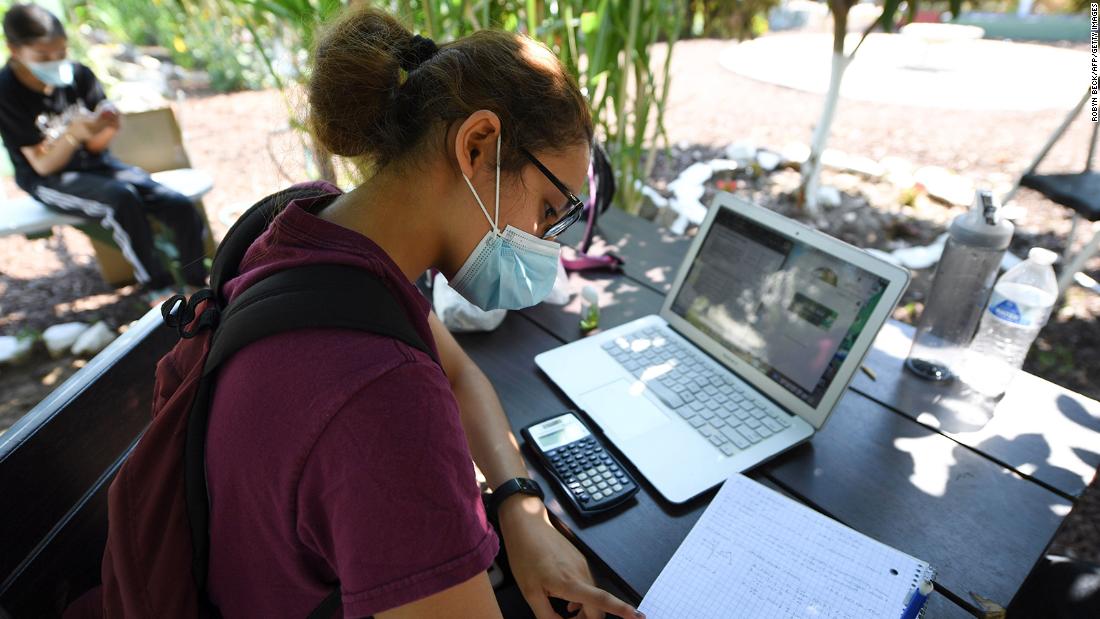You are here
New CDC guidance says Covid-19 rates in children 'steadily increasing'
Primary tabs
Sun, 2020-08-16 00:39 — mike kraft
 New CDC guidance says Covid-19 rates in children are 'steadily increasing' Health experts say children make up more than 7% of all coronavirus cases in the US -- while comprising about 22% of the country's population -- and the number and rate of child cases have been "steadily increasing" from March to July. CNN
New CDC guidance says Covid-19 rates in children are 'steadily increasing' Health experts say children make up more than 7% of all coronavirus cases in the US -- while comprising about 22% of the country's population -- and the number and rate of child cases have been "steadily increasing" from March to July. CNN
 New CDC guidance says Covid-19 rates in children are 'steadily increasing' Health experts say children make up more than 7% of all coronavirus cases in the US -- while comprising about 22% of the country's population -- and the number and rate of child cases have been "steadily increasing" from March to July. CNN
New CDC guidance says Covid-19 rates in children are 'steadily increasing' Health experts say children make up more than 7% of all coronavirus cases in the US -- while comprising about 22% of the country's population -- and the number and rate of child cases have been "steadily increasing" from March to July. CNN Health experts say children make up more than 7% of all coronavirus cases in the US -- while comprising about 22% of the country's population -- and the number and rate of child cases have been "steadily increasing" from March to July.
The data was posted alongside updated guidance from the US Centers for Disease Control and Prevention for pediatricians that also includes what is known about the virus in children.
"Recent evidence suggests that children likely have the same or higher viral loads in their nasopharynx compared with adults and that children can spread the virus effectively in households and camp settings," the guidance states.
Transmission of the virus to and among children may have been reduced in spring and early summer due to mitigation measures like stay-at-home orders and school closures, the CDC says.
But now, schools and universities across the country are reopening and in some cases have had to readjust their approach following positive tests among students and staff. How to safely welcome students back has been an ongoing debate between local and state leaders as some push for a return to normalcy and others fear returning to class could prove deadly for some. In some cases, teachers have opted to resign rather than risk contracting the virus.
"So if I'm put into a classroom of 30 or more kids, it's a small room, there's one exit, the ventilation isn't all that great for schools," Arizona teacher Matt Chicci, who quit his job, told CNN. "It's not a good situation."
In Georgia, where several districts reopened in recent weeks, more than 1,000 students and staff were asked to quarantine following cases of coronavirus or exposures to someone infected.
North Paulding High School, which came under scrutiny when a student shared a photo of a crowded hallway days after school reopened, reported 12 cases in school and 21 total cases during the week of August 8 to 14. ...
While some US officials -- including the President -- have downplayed the risk coronavirus
poses on children, the new CDC guidance notes children can develop severe illness and complications, even if that risk is lower compared to adults. The rate of hospitalizations among children is increasing, the guidance says, and among those hospitalized, one in three children is admitted to intensive care -- the same as adults. ...
Country / Region Tags:
Problem, Solution, SitRep, or ?:
Groups this Group Post belongs to:
- Private group -



Comments
Older Children and the Coronavirus: A New Wrinkle in the Debate
A study by researchers in South Korea last month suggested that children between the ages of 10 and 19 spread the coronavirus more frequently than adults — a widely reported finding that influenced the debate about the risks of reopening schools.
But additional data from the research team now calls that conclusion into question; it’s not clear who was infecting whom. The incident underscores the need to consider the preponderance of evidence, rather than any single study, when making decisions about children’s health or education, scientists said.
Some of the household members who appeared in the initial report to have been infected by older children in fact were exposed to the virus at the same time as the children. All of them may have been infected by contacts they shared.
The disclosure does not negate the overall message of that study, experts said: Children under age 10 do not spread the virus as much as adults do, and the ability to transmit seems to increase with age.
“The most important point of the paper is that it clarifies the care with which we need to interpret individual studies, particularly of transmission of a virus where we know the dynamics are complex,” said Dr. Alasdair Munro, clinical research fellow in pediatric infectious diseases at University Hospital Southampton in Britain.
The earlier study was not intended to demonstrate transmission from children to adults, only to describe contact tracing efforts in South Korea, said Dr. Young June Choe, assistant professor of social and preventive medicine at Hallym University College of Medicine and an author of both studies. ...